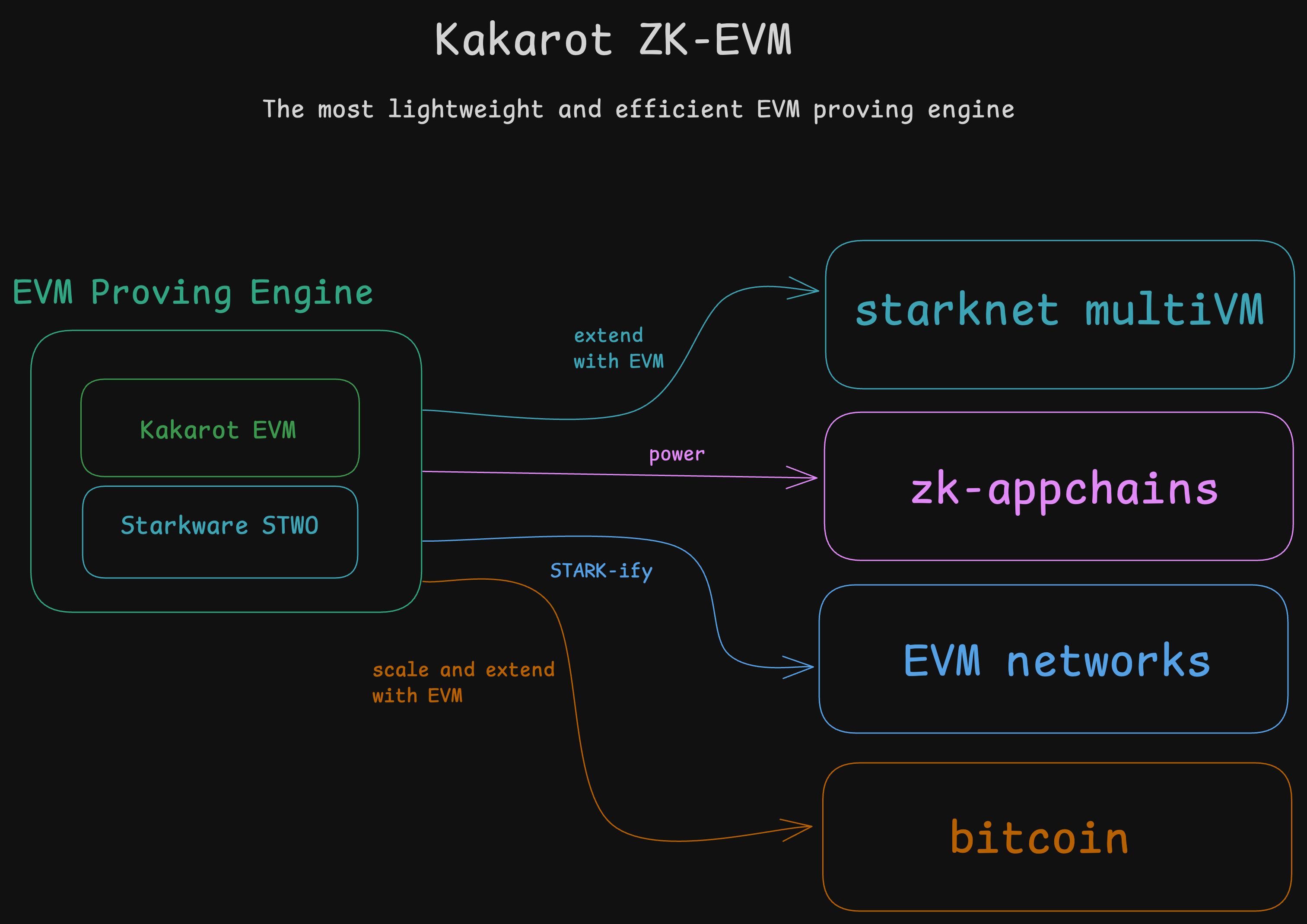A gentle introduction to Kakarot, the provable EVM
Welcome to our documentation v2
Welcome to our new documentation! We've updated it to reflect our roadmap and vision for the coming years: accelerating the adoption of ZK in Ethereum-equivalent blockchain infrastructure. Kakarot is a verifiable EVM, and KKRT Labs is bringing it to Starknet L2 as well as to all EVM chains - L1 and rollups alike.
Introduction
KKRT Labs is building Kakarot, the most lightweight and efficient EVM proving engine, in order to power the “STARKification” of all EVM execution. Kakarot is built on Cairo, Starkware’s STARK-friendly ZK-VM.
KKRT Labs packages this provable EVM into four different applications.
| Component | Description |
|---|---|
| Starknet MultiVM | EVM execution on Starknet L2, making Starknet EVM compatible and thus a MultiVM ZK-rollup. |
| K Stack | An EVM-compatible ZK-appchain modular stack composable with Starknet Appchains or Reth-based rollups |
| Keth | A chain-agnostic EVM proving service. Prove billions of EVM blocks from L1 and L2 networks. |
| KBTC | The first-ever EVM proving engine verifiable on Bitcoin, facilitating scaling for Bitcoin L1. |
Diagram - Kakarot proving engine has four applications
